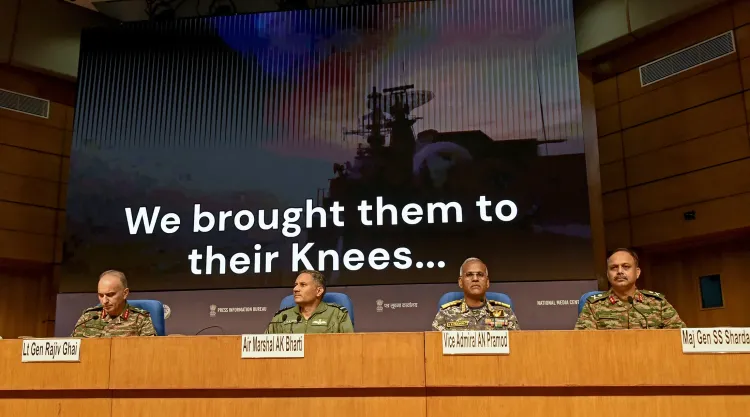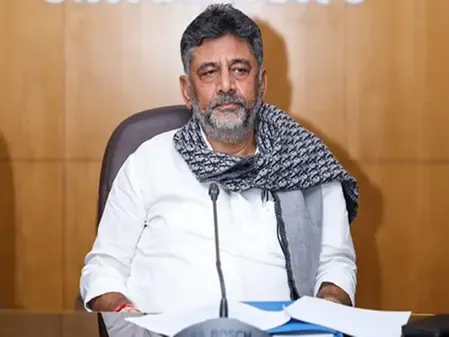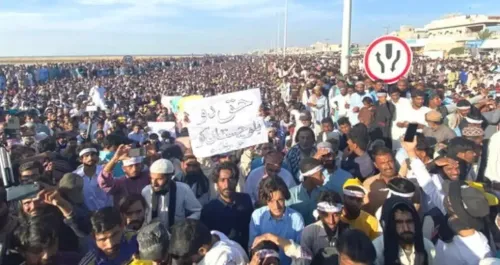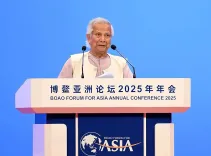Did India Deliver ‘Hellfire’ in Precision Strikes, Making Pakistan Realize the Futility of Escalation?

Synopsis
Key Takeaways
- Operation Sindoor involved precision strikes targeting key terror infrastructure.
- India’s military response demonstrates a zero-tolerance policy towards terrorism.
- Pakistan's air defense was largely ineffective against Indian strikes.
- India received support from numerous nations for its right to self-defense.
- The operation signifies a shift in India's military doctrine towards strategic deterrence.
New Delhi, May 12 (NationPress) India’s response to provocations from Pakistan was a meticulously planned yet assertive show of its military and strategic dominance. The ‘Operation Sindoor’ involved a series of precision air strikes that penetrated deep into Pakistani territory, targeting vital terror infrastructures and military-associated facilities.
The Indian Armed Forces executed nine targeted strikes on the morning of May 7, indicating a decisive transformation in India’s counter-terrorism strategy. These strikes were not directed at peripheral camps or low-tier assets. The objectives targeted were headquarters and major training centers that have long histories of supporting cross-border terrorism.
According to sources, one of the main messages conveyed was that no area is secure for terror operatives or their supporters, even within the core of Pakistan.
“Whether you are operating from Lahore, Rawalpindi, or Muridke, you will be targeted. We have altered the dynamics, and that message has been received,” the official remarked, referring to attacks on significant locations such as Muridke, where terrorist funerals were attended by high-ranking Pakistani civilian and military officials, highlighting the state's complicity.
On May 10, in response to a series of provocations from Pakistan, which included attempted drone incursions and artillery strikes across 26 locations, India retaliated with what military sources termed “hellfire”.
Eight major Pakistani military installations were struck using precision-guided munitions. One runway was rendered unusable. Chaklala, a facility near the Pakistani capital, suffered damage that even their own defense officials privately acknowledged as significant,” a senior source confirmed.
India’s airstrikes revealed the inadequacy of Pakistan’s air defense systems, which reportedly failed to intercept any of the incoming Indian projectiles. “We struck at will, and at locations of our choosing. Their response was disorganized and largely ineffective,” officials stated.
Pakistan attempted to retaliate with strikes on 14-20 Indian locations, but most of these were successfully intercepted by India’s air defense systems. “There was some limited damage to satellite facilities, but none of the major bases or targets they claimed were affected significantly. Their response fell well short of matching our capabilities or scale,” officials noted.
The thorough Indian response signified a new phase in military doctrine — transitioning from restrained retaliation to strategic deterrence through overwhelming force. The strikes were intentionally crafted to be non-escalatory, avoiding civilian and direct military targets while firmly asserting a zero-tolerance stance on terrorism.
This military operation was complemented by simultaneous diplomatic efforts. Indian leaders, including the External Affairs Minister and NSA, communicated clearly with global counterparts: there can be no equivalency between the victim and the perpetrator.
India declined to accept traditional international calls for parity and restraint, advocating instead for a clear condemnation of terrorism. At least a dozen nations publicly supported India’s right to self-defense, with many others expressing solidarity.
India also dismissed any third-party shuttle diplomacy, contrasting with past crises. “There was no back-and-forth between capitals. We stood firm, independent, and communicated our position directly,” sources said, highlighting a contrast with the post-Parliament attack diplomacy in 2001-2002.
By May 10, following India’s overwhelming military response, Pakistan reached out through the DGMO (Director General of Military Operations) line, indicating a willingness to de-escalate.
“That was the moment they realized they were outmatched — they had no appetite for further escalation,” sources stated plainly. “This is not business as usual. We’ve established a red line. Terrorism will incur a cost — military, political, and psychological,” a top military source concluded.









